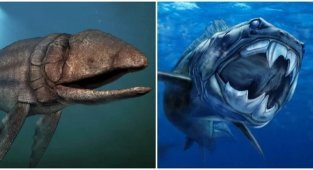9 mythical characters who actually existed (10 photos)
Everyone knows that there is some truth in every fairy tale. And surely the eyewitnesses - the storytellers - got ideas for their images somewhere. Although, of course, it is difficult to imagine what monsters inspired Homer to create Scylla and Charybdis. In this post you will see real prototypes of fairy-tale monsters.
Leviathan - Sperm Whale 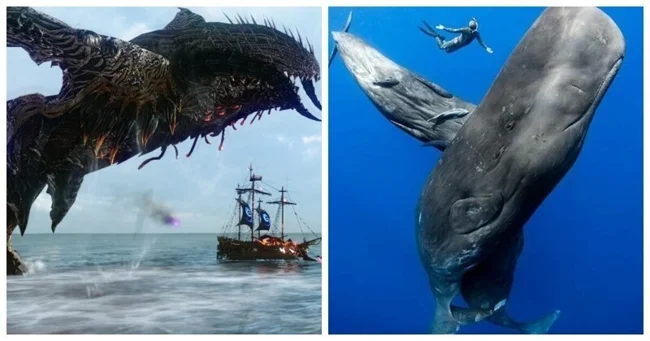
Leviathan is a sea monster from the Old Testament. There is an assumption that this was a giant sperm whale, which was found during excavations in Peru in the Ica desert. Its length was about 17 m, and it lived approximately 12-13 million years ago. The teeth, 36 cm long and 12 cm wide, could spark anyone's imagination, and with unimaginable exaggeration.
Basilisk - Basilisk lizard 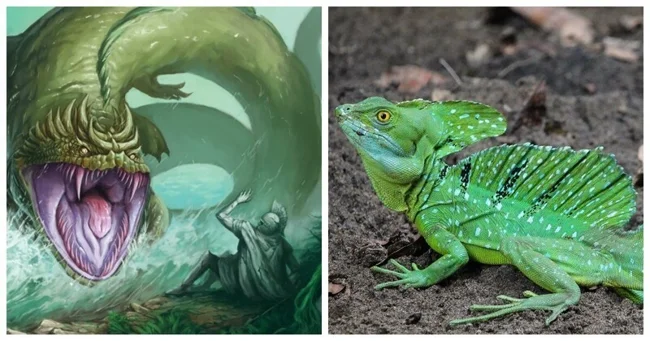
The prototype of the terrible poisonous snake basilisk, from whose gaze all living things are petrified, scientists call the Egyptian cobra, the horned viper, or the helmet-bearing basilisk. In the 1st century AD, Pliny the Elder in his “Natural History” described the basilisk as a small snake up to 30 cm long. And in Europe in the 13th century, thanks to the imagination of numerous authors, this “small snake” turned into something with a terrible set of body parts: from tiger paws to dragon wings
Roc bird - Epiornis 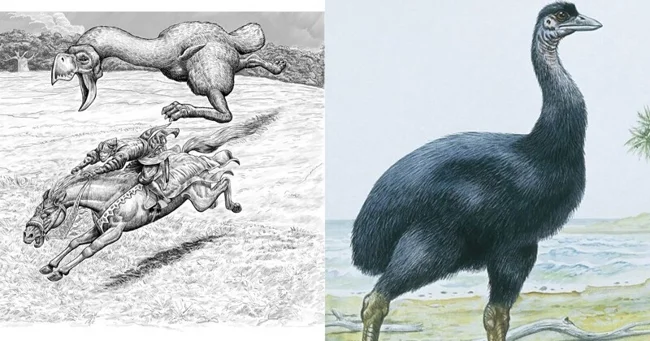
In Eastern mythology, you can quite often find a giant roc bird (ruk, fear-rah, leg, nagai), which is so huge that it feeds its children with elephants. The Florentine traveler Marco Polo had the opportunity to explain the myth. While a guest of the Mongol Khan Kublai Khan, Marco saw evidence of the existence of the roc bird - a 12-foot-long feather brought from the African island of Madagascar. Marco suggested that the feather belonged to a vulture, greatly exaggerated by human imagination. But there is another version. Until the 17th century, Madagascar was inhabited by giant birds of the apiornis family, which could not fly because they weighed up to 500 kg and were about 3 meters tall.
Mandragora - Mandragora officinarum 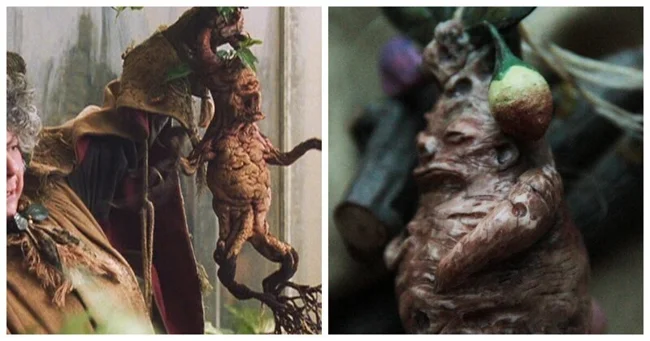
Mandrake is the root of a herbaceous plant that resembles a human figure, to which magical properties have long been attributed. Pythagoras called it a “humanoid plant,” and Columella called it a “half-human grass.” In some nations, the mandrake was even distinguished by gender (depending on the presence of primary sexual characteristics inherent in humans). It is extremely simple to explain the magical properties of mandrake: the scopolamine it contains causes irreversible damage to the brain.
Griffin - Protoceratops 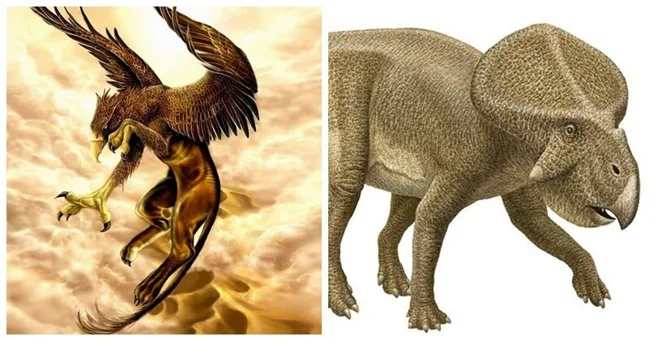
The griffin is a mythological winged creature with the body of a lion and the head of an eagle. It would seem that not a single animal fits the description. But historian Adriena Mayor suggested that the image of the griffin was inspired by the fossilized skeletons of the protoceratops dinosaurs living in the Altai. This explains the large size of the animal's body and the presence of a beak and "wings", which could be the remains of a dinosaur's bony collar.
Chupacabra - Coyote 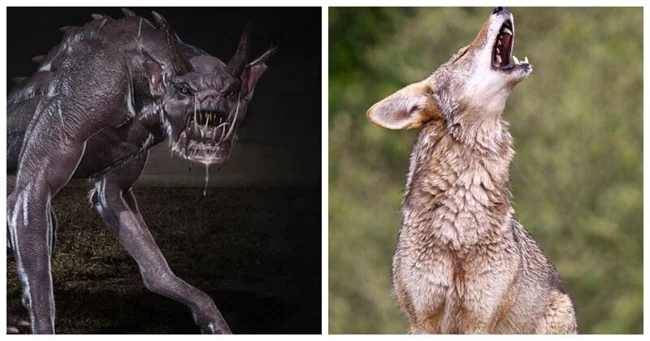
The Chupacabra is a frequent character in urban legends and horror films. Typically, "eyewitnesses" describe it as a dog or coyote with spikes, fangs and a pig's snout. He mainly makes his living by killing goats and sucking their blood. Most often, sick and mutated animals are mistaken for the Chupacabra.
Bigfoot - Gigantopithecus 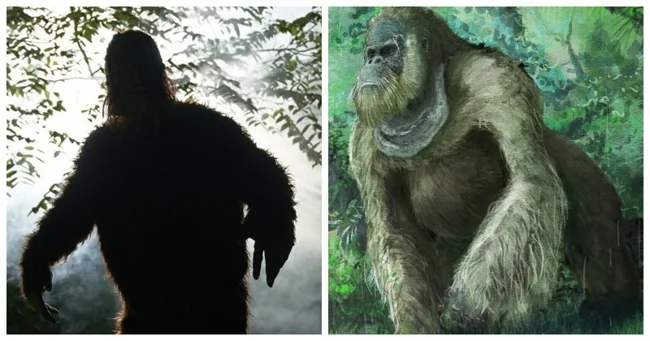
Bigfoot is a tall, wild humanoid creature covered with fur, a frequent hero of legends and stories from modern lovers of esoteric exotics. Bigfoots “live” in high mountain or forest areas, away from civilization. There are many theories about who he is, this mysterious stranger. The most plausible is that this is a genus of apes up to 4 meters tall and weighing up to 550 kg, which existed in the late Pleistocene (more than 12 thousand years ago) in the territory of modern India, China, Thailand and Vietnam.
Sea Serpent - Herring King 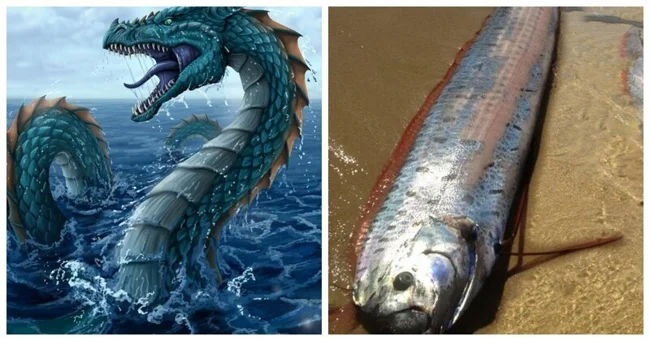
The sea serpent is a fantastic snake-like creature with a dragon's head, found in myths across the globe. The prototype of the sea serpent may well be the herring king. Some individuals of these deep-sea fish can reach a length of 3.5 meters and weigh about 250 kg. The largest of the herring kings that was officially recorded, its length was more than 11 meters. Why not a sea serpent?
Scylla and Charybdis 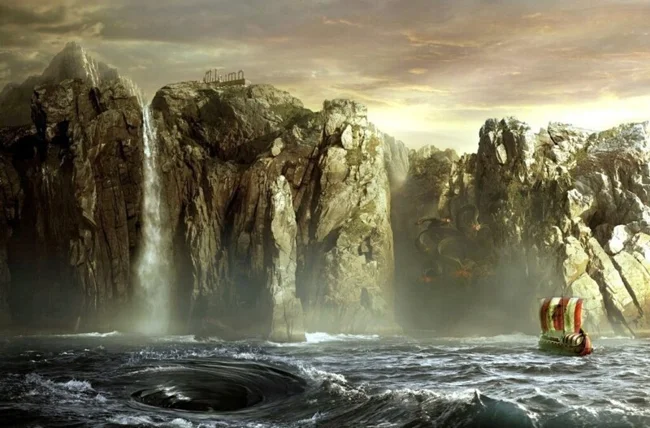
The terrible sea monsters from ancient Greek mythology, Scylla and Charybdis, also have their own prototype. No, these are not creatures, but in terms of their destructive effects, natural phenomena are no less terrible - terrible whirlpools and rocky shoals near Italy, which sank many real ships.
Elves among us 
Elves are a magical people familiar to everyone from fairy tales and films from German-Scandinavian and Celtic folklore. Most often they are described and imitated as beautiful, bright creatures, spirits of the forest. Howard Lenkhov from the University of California suggested that the prototype for the image of elves were people with a genetic disorder called Williams syndrome. This disease was first documented in 1961 in New Zealand. Its special features are a childish facial expression, short stature, a clear, sonorous voice and a mild degree of dementia, which is expressed in extreme sensitivity to the outside world, tenderness and kindness.

